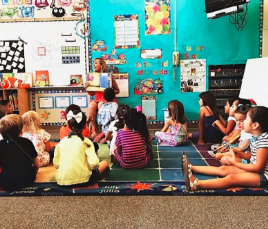Supporting young children in developing early writing skills is a wonderful way to spark creativity and build strong communication habits. These foundational skills are not just about forming letters—they’re about expressing thoughts, building confidence, and preparing for future learning. Here are friendly, effective ways to gently introduce writing to young learners.
Create a Print-Rich Environment
Start by surrounding children with meaningful print. Labels, signs, charts, and storybooks help children become familiar with letters and words. A classroom filled with visible and accessible print encourages curiosity and imitation, laying the groundwork for writing.
Provide Tools for Exploration
Offer a variety of writing tools like crayons, markers, pencils, and chalk. Let children choose what feels comfortable as they begin experimenting with marks, lines, and eventually letters. Include different surfaces too—paper, whiteboards, or even sand trays—to make writing feel fun and exploratory.
Make Writing Part of Daily Activities
Incorporate writing into daily routines. Children can draw pictures of their day, write their name on artwork, or help make grocery lists during pretend play. These small moments naturally integrate writing into meaningful experiences.
Encourage Drawing and Scribbling
Before writing letters, children often start with scribbles and drawings. Celebrate these early efforts! They’re essential stepping stones that help children connect movement with meaning. Offer praise and encouragement to build their confidence and interest in trying more.
Use Interactive Storytelling
Invite children to tell their own stories and help them write them down. This not only reinforces vocabulary but also connects spoken language to written words. Add illustrations or let children “sign” their name to bring ownership and pride to their work.
Model Writing Behavior
Children learn a lot by observing adults. Let them see you writing notes, labeling objects, or jotting down reminders. When they see writing used in daily life, they begin to understand its purpose and value.
Keep It Pressure-Free
Avoid pushing for perfection. Focus on effort and progress rather than spelling or handwriting. Celebrate attempts and provide encouragement. This gentle approach helps children stay motivated and curious.
Conclusion
Introducing writing in a playful, relaxed way nurtures a child’s natural desire to express themselves. With the right support and environment, children will gain confidence, enjoy the process, and build a strong foundation for future writing success. Every scribble is a step forward—and every child’s voice is worth celebrating.


